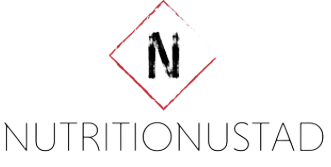What is Healthy Eating?
In today’s modern society, being healthy has become a priority, especially for children. Poor eating habits can lead to obesity, diabetes, and heart disease. Therefore, it is important for parents to teach their children proper eating habits early. Healthy eating means eating food that is low in fat, sodium, and sugar. When children are young, parents should feed their children healthy foods and limit junk food.

How to Start Eating Healthy
The first step to eating healthier is to eat more vegetables. Vegetables and fruits are full of vitamins, minerals, and antioxidants that our bodies need to stay healthy. Try eating more vegetables, and you’ll notice that you’ll get more energy. You’ll also notice a decrease in the chances of you getting a cold or the flu.
Here are some of the foods and their properties:
Chia seeds – Chia seeds are tiny black seeds that originated in Mexico and surged in popularity in the United States during the new millennium. Chia seeds are a superfood great for your health. Learn how to plant chia and how to grow chia.
Green Foods – Green foods, also known as “BASIC” foods are those green-colored foods that help to maintain a healthy heart. Green foods are packed with vitamins, minerals, and antioxidants.
Ginger – Ginger is used to treating colds, flu, and other upper respiratory infections. It is safe for children older than 2 years old. It can be used safely during pregnancy.
Kombucha – Kombucha is widely known for its health benefits, which include mental clarity, antioxidant boost, and immune support. Kombucha contains natural probiotics, which increase the good bacteria in your gut.
Breakfast Cereals – Breakfast cereals are not bad or healthy. It depends on which cereal you put on. Some cereals have high levels of sugar, which is bad for your teeth. There are plenty of breakfast foods that are safe for diabetics to eat. Eggs are a great option, as long as they are cooked without adding too much fat.
Elderberry – Elderberry is a deciduous shrub or small tree, native to Asia. The berries are edible and contain acids and flavonoids. Elderberry has a long history of medicinal use, including to treat cold and flu symptoms and supporting the immune system.
Kale – Kale is a type of cabbage, like collards and broccoli, but it’s sweeter than any of them. The leaves are large and thick, with a firm texture – ideal for kale chips. When cooked, the leaves become soft and pliable.
Tuna and Fitness – Most of us are familiar with the fact that tuna is a very healthy choice. This is because it contains high levels of omega-3 fatty acids, which are great for your cardiovascular health.
Echinacea – Echinacea, or purple coneflower, is a perennial herb and member of the Asteraceae (Compositae) family. Its lime green, iridescent, daisy-like flowers bloom in late summer and persist through fall.
Moringa – Moringa Oleifera is a member of the Lamiaceae (mint) family, and is native to tropical Africa, India, and Southeast Asia. Moringa has traditionally been used as a food and medicine and has been studied in traditional medicine for the treatment of diabetes.
Rosehip – Rosehip or Rosa canina is a fruit common to rose plants. The rose is the fruit (or flower) of the rose plant. Rosehips grow on rose hips. Rose hips are the small, spherical fruits of roses.
Shirataki Noodles – Shirataki noodles are made out of yam or konjac root. These noodles are low in calories and high in dietary fiber. This low-calorie noodle can be included in low-carb diets.
Teriyaki sauce – Teriyaki sauce is a mixture of sugar, soy sauce, mirin, and vinegar. Its use in the kitchen dates back to Japan in the 10th century. Used as a marinade for chicken, beef, pork, fish, and vegetables.
Flax seeds – Flax seeds contain omega-3 and omega-6 fatty acids, as well as fiber, vitamins, and minerals. They can be eaten raw or ground into a meal which is added to many foods.
Coconut milk – Coconut milk is the liquid squeezed from young green coconuts. It is made by grinding the brown coconut meat in a mixer or blender. The mixture is then strained through a cloth or muslin cloth.
Oats – Oats are gluten-free, so people with gluten allergies can eat oats and still eat gluten (wheat) products without it hurting them. Oats are also high in fiber, which is important for good health. You can make oat milk at home with just a few simple ingredients. All you need is some oats, water, and a blender. Simply blend the oats and water together until the mixture is smooth, then strain it through a cheesecloth or coffee filter to remove any pieces of oats.
You may like these posts from feeding:
List of foods with collagen – which ones have the most?
What are ultra-processed foods and why are they addictive?
Foods that help strengthen the brain
Types of Bread – Which is the Healthiest?
Nutritional value of food – What is it and how to read it?
Melatonin Foods – What are they and what are they for?
